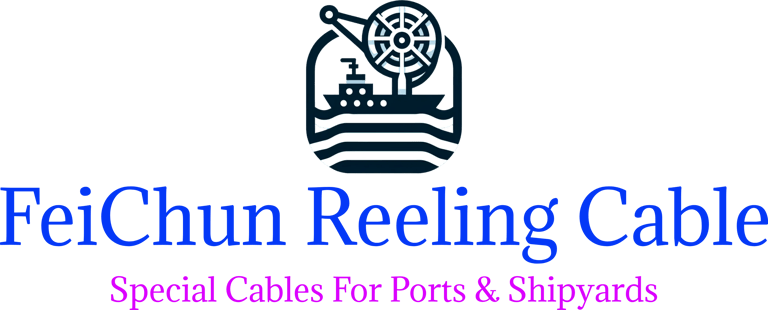Type 3TC-RH Reeling Rubber Cable: The Unsung Hero of Industrial Mobility
Type 3TC-RH Reeling Rubber Cable: The Unsung Hero of Industrial Mobility
Type 3TC-RH Reeling Rubber Cable: The Unsung Hero of Industrial Mobility
In the bustling world of industrial operations, where massive machines dance in orchestrated movements, there exists a crucial component that often goes unnoticed—specialized cables that enable this complex choreography. Among these remarkable engineering feats is the Type 3TC-RH reeling rubber cable, a marvel of materials science designed specifically for horizontal reel winding applications.
The Hidden Backbone of Dynamic Industry
Imagine a massive port crane extending its reach to load containers onto a ship, or mining equipment stretching across a quarry face. Behind these impressive mechanical movements lies an electrical lifeline that must endure constant flexing, environmental challenges, and mechanical stress without failing. This is where the Type 3TC-RH cable truly shines.
Unlike standard cables designed for static installations, the 3TC-RH cable thrives in motion. Compliant with the rigorous JIS C 3327 standard, this specialized cable can withstand thousands of winding and unwinding cycles while maintaining electrical integrity—a testament to its sophisticated engineering.
A Closer Look at the Engineering Marvel
What makes this cable so special? The answer lies in its meticulously crafted anatomy, where each component serves a specific purpose in the cable's overall performance.
The Conductor: Flexibility Meets Conductivity
At the heart of the Type 3TC-RH cable sits a tin-coated annealed copper strand wire conductor. This isn't your everyday copper wire. The annealing process creates a remarkably flexible core that resists fatigue failure despite repeated flexing. Meanwhile, the tin coating acts as armor against corrosion—a critical feature in harsh industrial environments where moisture and chemicals are common adversaries.
The fine-wire stranding pattern enables the cable to achieve a smaller bending radius without compromising its electrical performance. Think of it as the difference between bending a single thick stick versus a bundle of thin twigs—the bundled approach allows for greater flexibility while maintaining strength.
The Insulation: Protection from Within
Surrounding each conductor is a layer of ethylene propylene rubber (EP rubber) insulation. This remarkable material can operate at temperatures ranging from a frigid -40°C to a scorching +90°C while maintaining its electrical properties.
EP rubber offers exceptional resistance to electrical tracking (the formation of conductive paths on the insulation surface) and breakdown. It also resists water absorption, which is crucial because moisture is one of electricity's greatest enemies in industrial settings. This resilient insulation ensures that the cable remains reliable even after years of service in challenging conditions.
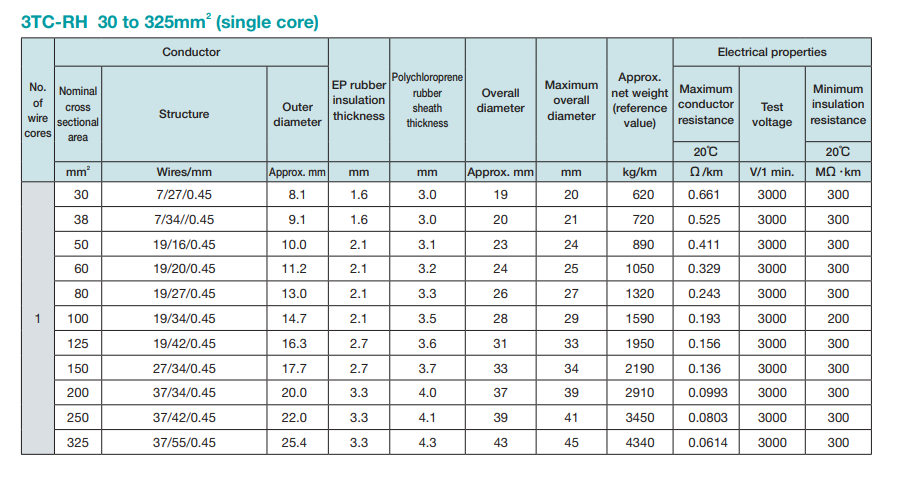

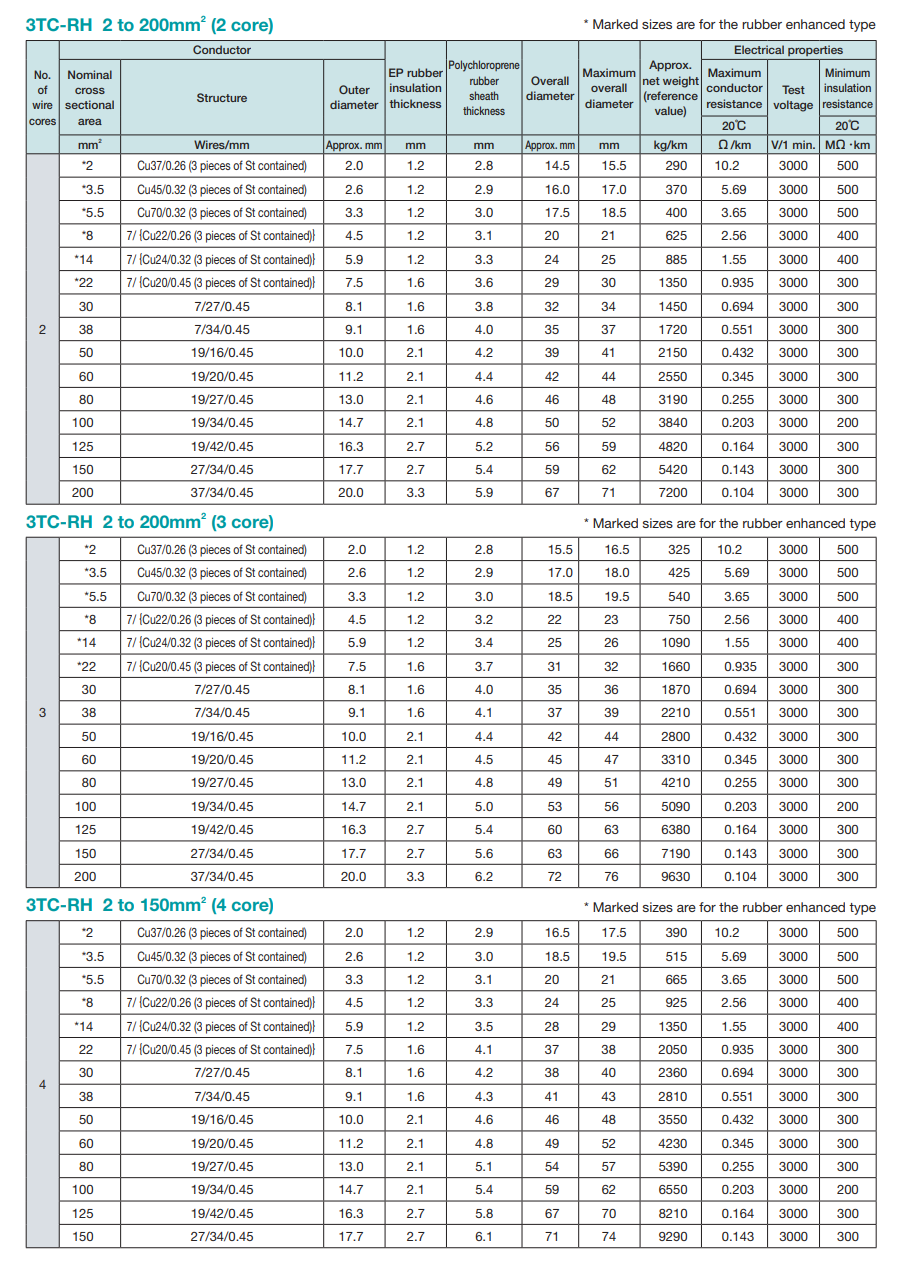

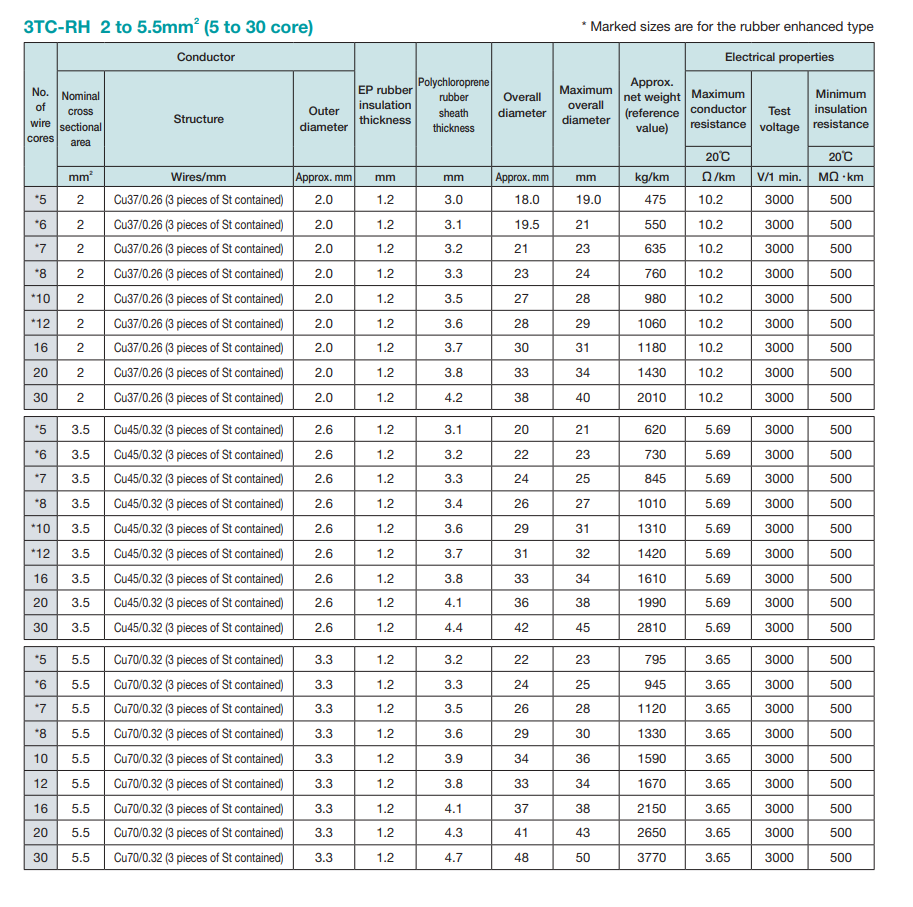

Type 3TC-RH Reeling Rubber Cable: The Unsung Hero of Industrial Mobility
In the bustling world of industrial operations, where massive machines dance in orchestrated movements, there exists a crucial component that often goes unnoticed—specialized cables that enable this complex choreography. Among these remarkable engineering feats is the Type 3TC-RH reeling rubber cable, a marvel of materials science designed specifically for horizontal reel winding applications.
The Hidden Backbone of Dynamic Industry
Imagine a massive port crane extending its reach to load containers onto a ship, or mining equipment stretching across a quarry face. Behind these impressive mechanical movements lies an electrical lifeline that must endure constant flexing, environmental challenges, and mechanical stress without failing. This is where the Type 3TC-RH cable truly shines.
Unlike standard cables designed for static installations, the 3TC-RH cable thrives in motion. Compliant with the rigorous JIS C 3327 standard, this specialized cable can withstand thousands of winding and unwinding cycles while maintaining electrical integrity—a testament to its sophisticated engineering.
A Closer Look at the Engineering Marvel
What makes this cable so special? The answer lies in its meticulously crafted anatomy, where each component serves a specific purpose in the cable's overall performance.
The Conductor: Flexibility Meets Conductivity
At the heart of the Type 3TC-RH cable sits a tin-coated annealed copper strand wire conductor. This isn't your everyday copper wire. The annealing process creates a remarkably flexible core that resists fatigue failure despite repeated flexing. Meanwhile, the tin coating acts as armor against corrosion—a critical feature in harsh industrial environments where moisture and chemicals are common adversaries.
The fine-wire stranding pattern enables the cable to achieve a smaller bending radius without compromising its electrical performance. Think of it as the difference between bending a single thick stick versus a bundle of thin twigs—the bundled approach allows for greater flexibility while maintaining strength.
The Insulation: Protection from Within
Surrounding each conductor is a layer of ethylene propylene rubber (EP rubber) insulation. This remarkable material can operate at temperatures ranging from a frigid -40°C to a scorching +90°C while maintaining its electrical properties.
EP rubber offers exceptional resistance to electrical tracking (the formation of conductive paths on the insulation surface) and breakdown. It also resists water absorption, which is crucial because moisture is one of electricity's greatest enemies in industrial settings. This resilient insulation ensures that the cable remains reliable even after years of service in challenging conditions.
The Outer Sheath: The First Line of Defense
The polychloroprene rubber (neoprene) outer sheath serves as the cable's frontline defender against the outside world. This tough elastomer withstands abrasion from contact with reel surfaces and resists oils, chemicals, weather, UV radiation, and ozone—all common threats in industrial environments.
The sheath also exhibits inherent flame-retardant properties, adding a critical safety feature for installations where fire risk is a concern. Perhaps most impressively, it maintains its flexibility even at low temperatures, ensuring the cable performs reliably in cold environments where lesser cables would become stiff and prone to damage.
Easy Identification: Color-Coding for Efficiency
When maintaining complex industrial systems, the ability to quickly identify individual wires can save precious time. The Type 3TC-RH employs a standardized color-coding system:
2-core configuration: Black, White
3-core configuration: Black, White, Red
4-core configuration: Black, White, Red, Green
5-core or higher: Uses additional markings or the "tracer method"
This thoughtful design element allows technicians to trace connections rapidly during installation or troubleshooting, minimizing downtime in critical operations.
Why Choose Type 3TC-RH for Horizontal Reeling Applications?
The specialized construction of the Type 3TC-RH cable offers significant advantages in horizontal reel applications, where the cable must wind and unwind repeatedly while maintaining structural integrity and electrical performance.
Superior Mechanical Stability
Unlike ordinary cables that would quickly succumb to the rigors of constant motion, the 3TC-RH cable maintains its shape integrity even after thousands of reeling cycles. Its reinforced construction provides enhanced resistance to abrasion from contact with reel surfaces and superior tensile strength to withstand pulling forces.
The cable achieves an optimal balance between flexibility and strength—flexible enough to wind smoothly but strong enough to resist the stresses of continuous operation. This balance is particularly critical in horizontal reeling applications, where the cable must maintain consistent performance despite being constantly in motion.
Environmental Fortitude
Modern industrial environments subject cables to a barrage of challenging conditions. The Type 3TC-RH cable stands up to these challenges with:
Oil resistance that prevents degradation when exposed to industrial lubricants
Chemical resistance that maintains integrity in the presence of common industrial chemicals
UV and weather resistance for reliable performance in outdoor applications
Temperature stability across a wide range, ensuring consistent operation in varying climates
Safety First
In industrial settings where electrical failures can have serious consequences, the 3TC-RH cable incorporates several important safety features:
Flame-retardant construction inhibits fire propagation
Low smoke emission during combustion enhances visibility during emergencies
Robust insulation prevents short circuits even under mechanical stress
Resistance to electrical tracking and breakdown maintains electrical integrity
Real-World Applications: Where the 3TC-RH Cable Excels
The unique characteristics of the Type 3TC-RH cable make it the preferred choice for numerous industrial applications where reliability under dynamic conditions is essential.
Material Handling Equipment
In busy warehouses and manufacturing facilities, overhead cranes, hoists, and conveyor systems rely on the 3TC-RH cable to power their operations. The cable's ability to withstand constant movement makes it ideal for these applications, where downtime due to cable failure would be costly.
Mining and Construction Equipment
Few environments are as harsh as mining and construction sites. Draglines, excavators, and mobile crushing equipment operate in dusty, abrasive conditions where cable durability is paramount. The 3TC-RH cable's rugged construction ensures reliable power delivery even in these challenging settings.
Port Equipment
Ship-to-shore cranes at busy ports must operate reliably in all weather conditions, often handling heavy loads with precision. The 3TC-RH cable's resistance to weather, UV radiation, and mechanical stress makes it an excellent choice for these critical applications.
Automated Manufacturing
In the era of Industry 4.0, automated manufacturing cells and robotic systems with extended reach requirements need reliable power delivery to maintain production efficiency. The 3TC-RH cable's durability and consistent electrical performance support these advanced manufacturing operations.
Installation Best Practices
To maximize the performance and lifespan of Type 3TC-RH cables in horizontal reeling applications, consider these professional installation recommendations:
Respect the minimum bending radius: Even though this cable is designed for flexibility, exceeding its specified minimum bending radius can cause internal damage and premature failure.
Ensure proper tension: Too much tension can strain the cable, while too little can cause improper winding. Adjust tension devices to maintain consistent, appropriate tension throughout the operational range.
Implement proper guiding systems: Use guide rollers or sheaves to ensure the cable follows the intended path without rubbing against edges or other components.
Perform regular inspections: Check for signs of abrasion, cuts, or deformation in the outer sheath that might indicate potential problems.
Monitor environmental conditions: While the 3TC-RH cable is designed for tough environments, extreme conditions beyond its specifications can affect performance. Implement additional protection if necessary.
The Future of Reeling Cable Technology
As industrial automation continues to advance, the demands placed on reeling cables will only increase. Manufacturers are continuously researching improved materials and construction techniques to enhance performance further.
Future developments may include advanced composite materials that offer even greater flexibility and durability, smart cables with integrated monitoring capabilities to predict maintenance needs, and environmentally friendly materials that maintain performance while reducing ecological impact.
Conclusion: The Critical Link That Keeps Industry Moving
The Type 3TC-RH reeling rubber cable might not be the most visible component in industrial operations, but its role is undeniably crucial. By providing reliable power delivery in dynamic applications, this specialized cable enables the mobility and flexibility that modern industry demands.
From its carefully engineered conductor to its rugged outer sheath, every aspect of the 3TC-RH cable's design serves a specific purpose in ensuring consistent performance under challenging conditions. For engineers and system designers working with horizontal reel winding applications, understanding and selecting the right cable is a critical decision that directly impacts operational reliability and safety.
The next time you observe a massive crane in operation or watch an automated manufacturing system in motion, take a moment to appreciate the sophisticated engineering behind the cables that make such impressive mechanical choreography possible. The humble 3TC-RH cable truly is the unsung hero of industrial mobility.


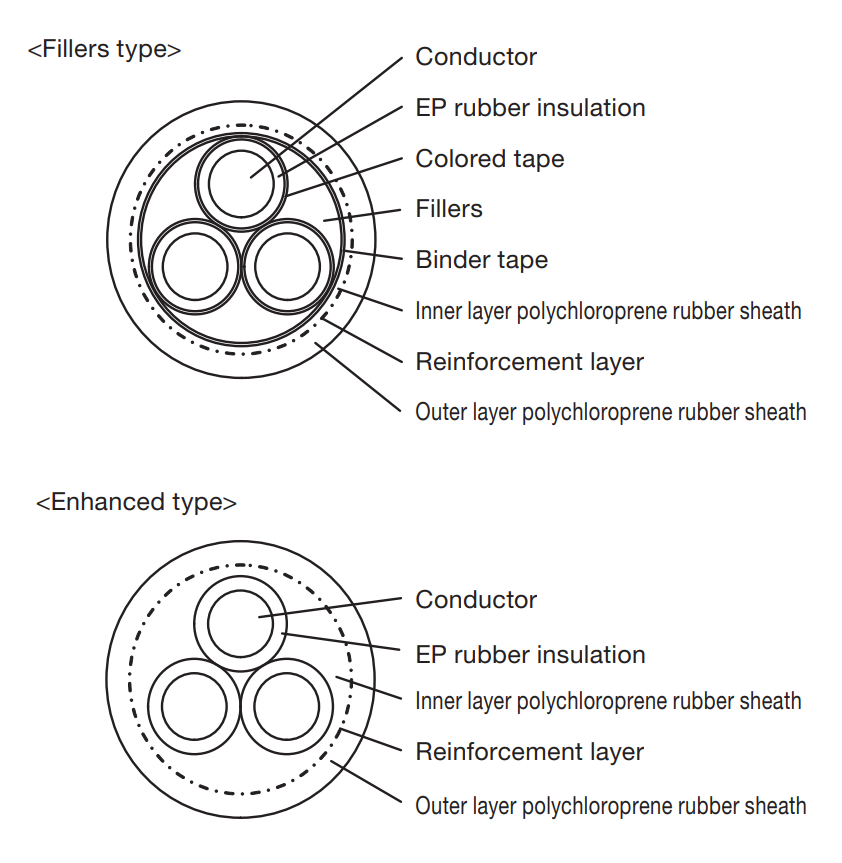

Frequently Asked Questions (FAQ)
General Information
What is the Type 3TC-RB (3PNCT) Reeling Rubber Cable?
It's a Class 3, 600V rubber-insulated cable designed for dynamic applications requiring frequent flexing, such as in curtain systems and cableveyor methods.What does "3PNCT" stand for?
"3PNCT" refers to a three-core Polyvinyl Chloride-insulated, Neoprene-sheathed Cabtyre cable, indicating its construction and insulation materials.Which standards does this cable comply with?
It complies with JIS C 3327, ensuring it meets Japanese Industrial Standards for rubber-insulated cables.What are the primary applications for this cable?
It's used in dynamic industrial settings like curtain systems, carrier drums, and cableveyor methods, where flexibility and durability are essential.What voltage rating does this cable have?
The cable is rated for 600V, suitable for low-voltage power applications.
Construction & Materials
What type of conductor is used?
Tin-coated annealed copper strand wire, offering excellent conductivity and corrosion resistance.What insulation material is utilized?
Ethylene Propylene Rubber (EP rubber), known for its flexibility and thermal stability.What is the sheath made of?
Polychloroprene rubber, providing resistance to oils, chemicals, and environmental factors.Is there a reinforcement layer?
Yes, a reinforced layer midway through the sheath enhances resistance to external damage and impact.How are the wire cores identified?
Color coding: 2-core (Black, White), 3-core (Black, White, Red), 4-core (Black, White, Red, Green), 5-core or higher uses a tracer method.
Performance & Durability
How does the cable perform under mechanical stress?
The reinforced sheath and flexible insulation allow it to withstand frequent bending and reeling without degradation.Is the cable resistant to environmental factors?
Yes, the sheath provides excellent resistance to oils, chemicals, UV radiation, and temperature variations.What is the operating temperature range?
Typically, -40°C to +90°C, depending on specific installation conditions.Does the cable have flame-retardant properties?
Yes, the materials used are inherently flame-retardant, enhancing safety in industrial environments.What is the expected service life?
With proper installation and maintenance, the cable offers a long service life, even in demanding applications.
Installation & Handling
What is the minimum bending radius?
Generally, six times the cable's outer diameter, but always refer to manufacturer guidelines for specific values.Can the cable be used in vertical installations?
Yes, it's suitable for both horizontal and vertical applications, including vertical reel winding methods.Is special equipment needed for installation?
Standard cable handling equipment is sufficient, but care should be taken to avoid twisting and excessive tension.Can the cable be used outdoors?
Yes, the sheath's resistance to UV and environmental factors makes it suitable for outdoor use.Are there specific installation precautions?
Avoid exceeding the bending radius, prevent twisting, and ensure proper support to maintain cable integrity.
Maintenance & Safety
How should the cable be maintained?
Regular inspections for wear, proper tension, and environmental damage are recommended to ensure longevity.What are signs of cable wear?
Cracks in the sheath, discoloration, stiffness, or exposed conductors indicate potential issues.Is the cable safe in high-temperature environments?
Yes, within its specified operating temperature range, it maintains performance and safety.Can the cable be repaired if damaged?
Minor sheath damages can sometimes be repaired, but significant damage may require cable replacement.Does the cable emit toxic fumes when burned?
The materials are designed to be flame-retardant and minimize toxic emissions, but burning any cable should be avoided.
Technical Specifications
What is the conductor resistance?
Resistance varies by size; for example, a 3.5mm² conductor typically has a resistance of 5.38 Ω/km at 20°C.What is the insulation resistance?
Minimum insulation resistance is generally 500 MΩ·km at 20°C, ensuring electrical safety.What is the test voltage?
The cable is tested at 3000V for one minute to ensure insulation integrity.What sizes are available?
Sizes range from 1.25mm² to 325mm², accommodating various current requirements.What is the approximate weight?
Weight depends on size; for instance, a 3.5mm² cable weighs approximately 90 kg/km.
Environmental & Compliance
Is the cable environmentally friendly?
While designed for durability, proper disposal and recycling practices should be followed to minimize environmental impact.Does it meet international standards?
Primarily designed to meet JIS C 3327, but it may also comply with other international standards; verify with the manufacturer.Is the cable recyclable?
Components like copper conductors can be recycled; consult local regulations for proper disposal methods.Does the cable contain hazardous substances?
It is manufactured to comply with safety standards, minimizing hazardous substances; always refer to the material safety data sheet (MSDS).Can the cable be used in cleanroom environments?
While not specifically designed for cleanrooms, its low outgassing materials may be suitable; consult with the manufacturer for confirmation.
Type 3TC-RH Reeling Rubber Cable: The Unsung Hero of Industrial Mobility
Discover the robust Type 3TC-RH Reeling Rubber Cable by Feichun Cable—engineered for horizontal reel winding applications. Featuring EP rubber insulation and a polychloroprene sheath, this 600V cable ensures exceptional flexibility, durability, and compliance with JIS C 3327 standards. Ideal for dynamic industrial environments requiring reliable power transmission.
5/1/202510 min read
